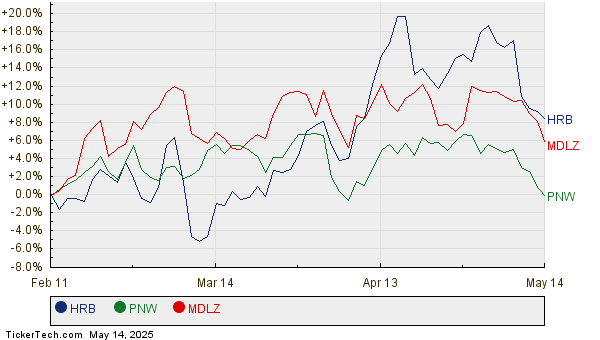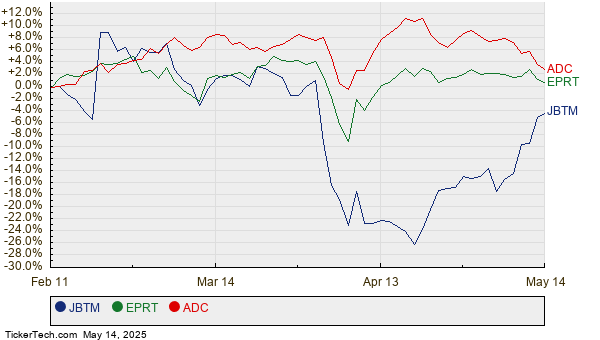Intel’s $95 Billion Investment Aims to Transform Foundry Business
Intel (NASDAQ: INTC) is making a significant push into its foundry business. Over the past four years, the chip giant has invested approximately $95 billion in capital spending to establish itself as a leading-edge foundry, positioning it to compete with major players like TSMC and Samsung. Despite these efforts, Intel’s stock remains nearly 40% lower than its 2024 highs, as investors express doubts about its ambitious plans. Last year, the foundry business reported a loss of nearly $13 billion. However, there may be a shift on the horizon, as Intel’s new process nodes are nearing deployment. So, what’s the latest in Intel’s foundry sector?
18A Process: A Key Component of Intel’s Strategy
18A Process Will Make Or Break Foundry Bet
Intel is counting on its 18A process, its most advanced manufacturing technology to date, featuring a 1.8-nanometer process node to revive its foundry business. Currently in risk production, this process involves creating a small batch of chips to test and refine manufacturing techniques, with full-scale production expected later this year. Laptops with 18A-based processors are already being sampled with original equipment manufacturers (OEMs).
This new process utilizes advanced technologies such as RibbonFET gate-all-around transistors and PowerVia backside power delivery. These innovations allow for smaller transistors, enhancing performance and power efficiency. PowerVia is expected to be particularly advantageous for artificial intelligence and high-performance computing tasks. Overall, Intel claims its process node will deliver faster speeds and lower power consumption compared to TSMC’s competing node, which is likewise anticipated to enter mass production soon. Nevertheless, TSMC’s chips may still excel in density and cost-effectiveness.
Additionally, Intel has introduced a high-performance variant known as 18A-P, for which early wafer production has begun at its facilities. The company is also working on an advanced version called 18A-PT, which supports 3D stacking with hybrid bonding interconnects. This enables direct vertical stacking of dies on top of its most sophisticated node. While TSMC already has a similar capability, 18A-PT could allow Intel to produce highly integrated chiplet designs that offer greater density and efficiency.
Next Up: The 14A Node
Next Up: The 14A Node
At the recently held Intel Foundry Direct 2025 event, Intel outlined its future roadmap, focusing on next-generation nodes that promise to further enhance performance and capabilities for its foundry customers.
“`html
Intel’s New 14A Process Could Give It Competitive Edge
Intel Advances in Chip Technology
Intel has confirmed it is working with lead customers on its 14A process, which is equivalent to 1.4nm technology. This new process will succeed the 18A node, with test chips currently being prepared for tape-out. It will incorporate an enhanced version of Intel’s backside power delivery technology. The company aims for risk production of this advanced process by 2027. In comparison, TSMC’s competing 1.4nm-class node is not expected until 2028, potentially giving Intel a one-year head start in attracting high-performance computing and AI chip customers.
Intel’s Role in America’s Semiconductor Resurgence
Intel is at the forefront of the U.S. effort to reshore semiconductor manufacturing. As the only U.S.-based foundry equipped with both leading-edge process technology and advanced packaging, Intel stands out. While TSMC has been expanding its foundry capacity in the U.S., new Taiwanese regulations restrict it from producing advanced chips overseas. This positions Intel uniquely in the domestic market as chips become crucial for applications ranging from artificial intelligence to national defense. With the largest domestic chipmaking footprint, Intel may greatly benefit from this strategic shift.
Volatility in Intel Stock Performance
Over the past four years, Intel’s stock (INTC) has experienced significant volatility, with annual returns ranging from 6% in 2021 to -60% in 2024. In comparison, the Trefis High Quality (HQ) Portfolio—comprising 30 stocks—has been less volatile and has outperformed the S&P 500 during the same period. Investors may be questioning whether now is the right time to invest in Intel.
Currently, Intel stock trades at under 25x estimated earnings for 2026, a relatively reasonable multiple. However, challenges remain. The company has faced declining earnings and lost market share to AMD in the PC and server markets, alongside a broader industry shift from CPUs to GPUs in the AI sector. Despite these concerns, strong execution in its foundry business and successful customer acquisition could lead to significant upside for Intel stock.
Our valuation sets Intel’s stock price at $25 per share, representing a potential increase of 17% from its current market price. For a detailed analysis of Intel’s valuation, see our breakdown of the key drivers behind this estimate.
The views and opinions expressed herein are the views and opinions of the author and do not necessarily reflect those of Nasdaq, Inc.
“`





